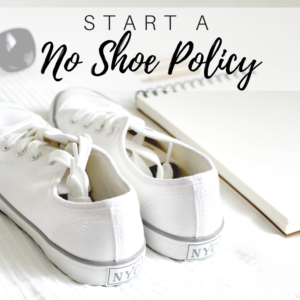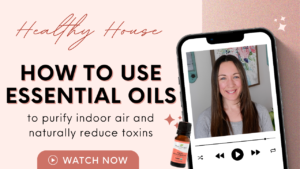
When we think of kick-starting our health, we often times think of things like dietary improvements we can make, ways to reduce stress, or exercise programs to begin. Rarely do we consider that our homes are as much a part of our health as these other areas. If you consider your house and count up the number of hours you spend there, most likely, you are spending more time inside your house than anywhere else in the world. More importantly, we are spending our sleeping time inside our homes, which is our bodies’ most vulnerable time as it repairs itself from a day in our toxic world.
Fortunately we are living in an ever-increasingly health conscious society where the whole health of our families is becoming the focus. The air you breathe at home and the toxins you come in contact with inside your house can often times play a bigger role with your health than the outdoor polluted air. This is due to the fact that our modern homes have been created to be air tight, cutting us off from the outdoor air. While this is extremely effective when it comes to energy efficiency, our daily habits and home routines have not caught up with our newer building practices.
The tighter and more efficient your home is, the more important it is to keep toxins out. Without any place for the air to leave a modern house, the chemical and organic toxins circulate throughout the home over and over again, affecting the loved ones who live there.
The good news is there are ways to use this modern, air-tight home to your benefit. Your house can become your safe haven from the world and your body’s resting place from toxins.
1) Choose Your Cleaning Product Carefully

Most of us have a cabinet full of cleaning supplies that we’ve purchased and used throughout the years. While these cleaning supplies may seem like they help the cause of a healthy house, many times they do JUST the opposite.
In particular, disinfectants such as Lysol and Clorox are ladened with chemicals that have been known to affect the nervous system, cause respiratory issues and even affect the developmental growth of children. What’s more, is that many cleaning products are not required to state exactly what is inside the bottle due to trade secret regulations. This leaves you, the consumer, at a disadvantage.
When you spray a cleaner onto any surface in your home, not only is the solution now tarnishing the surface, but the solution has become airborne and is easily inhaled directly into the lungs of anyone nearby. As mentioned before, our homes are built extremely airtight, which unfortunately means that the cleaning products used are circulating throughout our homes in the air even more.
The worst offenders of cleaning products are:
- Laundry Detergents
- Dryer Sheets
- Disinfectants
- Air Fresheners
- Bathroom & Tub Cleaners
The best way to avoid these chemicals from entering your home is to avoid their use altogether. Essential oils are one of the best alternatives to chemical cleaners. Making your own cleaners has never been easier with the tools and products available to us.
As an alternative to dryer sheets, you can use wool dryer balls with a few drops of Lavender Essential Oil. To combat house odors without adding chemicals, you can use a diffuser to disperse your favorite essential oils.
General cleaners can be made with one cup water, one cup vinegar and 20 drops of an essential oil with disinfecting properties (lemon, lavender and eucalyptus are my favorites). For bathroom surfaces, add ¼ cup of rubbing alcohol to create a disinfectant.

Wool Dryer Balls Natural Fabric Softener $16.95 on Amazon
2) Avoid Creating Additional Moisture
The way to create a healthy space is to have moderately dry air inside your home. Humid air not only promotes mold and mildew growth, but also promotes the reproduction of dust mites. When your body is surrounded by these organic toxins, it limits the effectiveness of your immune system. If your body is constantly fighting off irritants and allergens, it becomes susceptible to the germs and bacteria you come in contact every day, meaning you become sick more often.
Having a home with higher humidity also means products and materials containing formaldehyde, flame retardants and other VOCs will actually off-gas into the air at a higher rate. The drier your air, the less off-gassing you will have.
There are many ways our homes retain moisture, and unfortunately due to our tightly-sealed homes, the moisture has no place to go or dry out. What we are left with is homes that are damp on the inside, creating problems you may not detect for years.
While there are big investments you can make in your home to introduce more fresh air and circulate it throughout your home, the best place to start is by changing a few key habits.
Remember that any time you produce moisture, it needs to have a way to evaporate, or leave your home. A great way to ensure this is to use a vented fan whenever possible. An example would be using a kitchen vent fan when you are cooking. You can also cook with pot lids, which is a great way to prevent additional moisture.
In the bathroom, make sure to use a vented fan while showering and leave it running for about 20 minutes afterwards to remove as much moisture as possible.
When the weather outside is drier, you can open your windows and screen doors to let extra air circulate through your home.
Some other habits to avoid are:
- Line drying clothing without proper ventilation
- Having excess houseplants (and overwatering them!)
- Storing firewood indoors
The last, but maybe biggest way you can protect your home from moisture is by making sure the soil around the foundation of your home slopes away, downhill. This will ensure that the water around your house drains away from it, and not down into your foundation. You can also make sure gutters are properly installed and downspouts run at least 8 feet away from the house. This will help carry the water from your roof away from your house.

3) Implement a No-Shoe Policy
Do you know everywhere you’ve walked today? Through a park, a public restroom, a parking lot? These places allow our shoes to pick up dirt, bacteria and pesticides and carry them from place to place. When you walk through your home, the particles can become embedded into your carpet and rugs, allowing them to stick around. Once they are in your home it can be difficult to truly remove them as they can become airborne and circulate.
While you may not use pesticides in your lawn care routine, many public parks and gardens do. If you’re tracking them into your home, they can easily become embedded in carpet and finally airborne. Once inhaled, they can negatively affect your nervous system and respiratory system.
Keeping shoes at the door is the best policy. This will help keep outdoor toxins outdoors and save you from introducing them to your home and indoor environment. Create an area with a bench and rug for people to remove their shoes when they enter your home. A rug will help catch any particles that come in on shoes and keep them there. Once a week or so, take your rug outside to disinfect it in the sun.
Remember that anything brought into your home will likely stay around for quite a while, circulating throughout your house before it’s filtered out.

4) Organic Textiles for the Win
Often times we spend so much time picking out rugs, drapery and furniture, making sure it is the right color, feel and design for our space that we forget about the importance of the fabric and treatment of that fabric.
Many window treatments and upholstered furniture available are made to be “wrinkle-free”. While this may seem like a great benefit and wonderful option, the truth is it couldn’t be farther from that. Any fabric that is advertised as “wrinkle-free”, generally has been treated with chemicals like formaldehyde to create the outcome. You may think by washing it you can get rid of the formaldehyde, but that simply is not true. A wrinkle-free or wrinkle resistant fabric will always have chemicals and formaldehyde in it, no matter how many times you wash it.
Flame retardant chemicals also plague our home textiles. These chemicals have tested positive as a carcinogen and also have been linked to nervous system disorders, reproductive problems and developmental delays in children. These chemicals are the same as products treated with formaldehyde in the sense that it will never wash out.
The biggest problem with both of these fabric treatments is that chemicals never have a good chance of dissipating and leaving our homes. With our modern homes sealed up tightly, the VOCs and chemicals produced by textiles will circulate around our house, leaving only when fresh air is introduced.
Even just 40 years ago, our homes exchanged the indoor air with the outdoor air about five times per hour. Currently, homes typically exchange the indoor air with the outdoor air just five times per day. Taking this fact into consideration, you can see how any toxin inside our home is having a harder time being expelled outdoors compared to the past generations of homes.
When it comes to fabrics, opting for a material that is 100% Organic Cotton is always your best bet. You can also check to see if they are GOTS Certified, which indicates a third party has checked and verified the safety of the product. A product that is 100% Certified Organic should be free from all toxins, treatments and chemicals.




